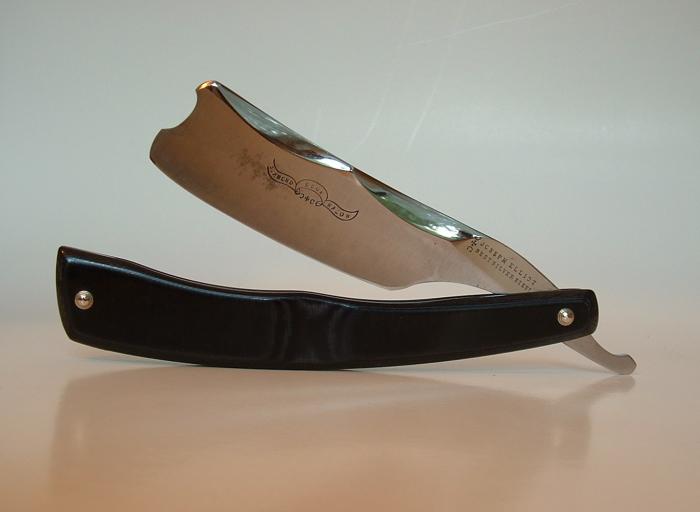Results 11 to 15 of 15
Thread: Joseph Elliot Silver Steel
-
09-08-2010, 05:09 PM #11

I'm thinking of leaving the patina as I like the old look that it brings. Is this ok to do, as far as hygiene goes?
-
09-08-2010, 05:14 PM #12

Also, dealer told my father in law that he had narrowed it's production down to between 1820 and 1870. Does this sound accurate? Is there any way of narrowing it down further?
It may also be helpful to know that it came in a black coffin-shaped box with the C's and crosses on it.Last edited by Dulouz; 09-08-2010 at 05:28 PM.
-
09-08-2010, 07:29 PM #13
-
The Following User Says Thank You to hoglahoo For This Useful Post:
eTom (09-11-2010)
-
09-08-2010, 07:45 PM #14

The scales can be fixed. If you want to take the little chips out, get some black epoxy die. Mix up a small ammount of 10 min epoxy. A quick set keeps it from sagging. Put some wax paper behind the scales along with something flat like a paint stirrer from the hardware store. Then you can use a toothpick or sliver of wood to dabble epoxy into the bug bights to fill them. Then sand it lightly with some 400 grit where the epoxy was applied. That will get it even with the scales. Then give the scales a light sanding with some high grit paper, 800-2000 to clean and smooth them out. You can wipe the scales down or soak them in some neatsfoot oil to recondition them. Then give them a buff with some white compound to shine them back up like new.
-
09-08-2010, 10:55 PM #15Senior Member



- Join Date
- Apr 2008
- Location
- Essex, UK
- Posts
- 3,816
Thanked: 3164
The term 'silver steel' gives a starting date - 1820 - the original formulation by Faraday contained silver (modern silver steel does not - and has not for a very long time: it is just bright tool steel).
From the Ken Hawley Trust, describing an old silver steel razor:
HANDLE - SCALES of black buffalo. Square HEAD and spire TANG END. Iron RIVETS and brass PINS.
DATE - c1825.
COMMENTS - These makers made razors from silver steel and marked them as such, but this one isn't. Other razormakers used silver steel. Messrs Rhodes of The Wicker, Sheffield, wrote a booklet on razors in 1824 having experimented with silver steel. Note that Pearce was using this metal for his razors. The instigator of this metal was Faraday in London, who got Sanderson of West Street, Sheffield to make samples of silver steel on his behalf and no doubt sold the steel to other razormakers.
It is right at the bottom of the page.
Regards,
Neil


 LinkBack URL
LinkBack URL About LinkBacks
About LinkBacks






 Reply With Quote
Reply With Quote


